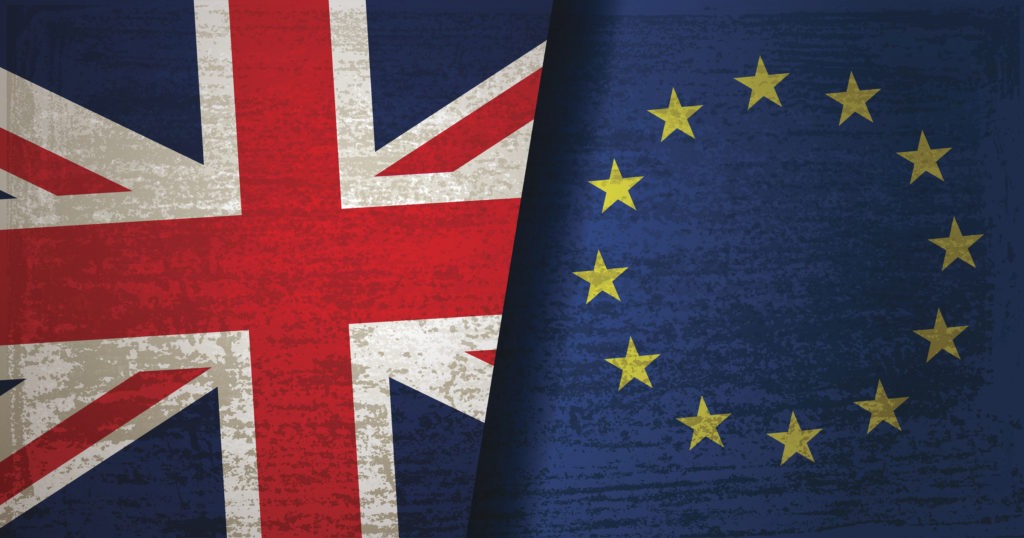UK consultation on vehicle CO2 targets post-Brexit due to end
17 August 2020

17 August 2020
A UK Government consultation on whether the country should adopt EU rules over vehicle CO2 emissions closes this week. Targets for grams per kilometre and derogation thresholds are under the microscope.
With the UK in a transition phase following its exit from the European Union on 31 January 2020, it still adopts existing EU strategies as it looks to forge its own path from 1 January 2021. Currently, the country follows EU regulation 2019/631, which requires the average CO2 emissions of all new cars registered in the EU in any given calendar year to be no more than 95g/km of CO2 by 2021. A total of 95% of all new cars registered in 2020 must meet this 95g/km limit, effectively giving a one-year phase in of the 2021 target.
However, after 31 December 2020, subject to the terms of the future trade agreement between the UK and the EU, new vehicle-registrations in the country will cease to fall under the scope of this regulation.
The Department for Transport (DfT) is, therefore, working on its own legislation to correct for ′deficiencies or inoperabilities.’ This includes, for example, formulae that set specific CO2 targets in order to account for UK-only regulations and derogation thresholds to account for the size of the UK market rather than the EU.
Balancing act
The UK is looking to retain policy that supports the delivery of its wider ambitions to reduce CO2 emissions, as it implements its ′Road to Zero’ plan. Part of this will see a ban on the sale of new internal combustion engine (ICE) and hybrid models, with the likelihood that only battery-electric vehicles (BEVs) and plug-in hybrids (PHEVs) that can travel a certain distance on electric-power, will be approved for sale.
Yet there is also a risk of alienating carmakers should it bring in legislation that is too harsh, especially considering that new rules would take into account the reduced volume of sales in the UK alone, where buying habits are very different to the continent and the charging infrastructure is still developing. According to the latest UK registration figures, BEVs have a 4.7% market share year-to-date, up from 1% in the first seven months of 2019 but still behind petrol (59.6%), diesel (17.8%) and hybrid (6.3%).
Existing formulae
A value limit curve, set by formulae listed within the regulation, establishes the CO2 target according to average fleet mass. The curve is set so that the specific average emissions targets for each manufacturer’s fleet of new cars combines to achieve the EU fleet target. Manufacturers balance the CO2 emissions of new vehicles sold across the 28 individual EU markets to deliver compliance. Post-transition period, manufacturers will not be able include sales in the EU27 to meet UK targets.
The government plans to maintain the level of effort required to meet targets from 1 January 2021 in the UK, by maintaining the EU formulae ′as-is’. Rather than comparing the manufacturer’s fleet against the average mass of relevant UK vehicles, the fleet will continue to be compared against the average mass of relevant EU vehicles.
Due to the UK having a higher average vehicle mass than the EU, this means that the combined sum of UK targets will be slightly higher than in the EU27. However, this reflects a continuation of the current level of effort employed in the UK in order to meet compliance standards rather than any weakening of ambition.
Derogation
The UK is also looking into the issue of derogations, which aim to protect smaller carmakers that lack resources to invest in the development of low and zero-carbon technology. The legislation dictates that such manufacturers are set relative emssions targets, rather than absolute ones..
The EU threshold values are set on the basis of EU market sales, rather than those in the UK (which represents between 15%-20% of the EU market). The UK Government believes that adjusting derogation thresholds to reflect a UK only market share would introduce changes for manufacturers that sell significantly higher or lower proportions of vehicles in the UK than in the wider EU. This could change their category, substantially altering their emissions targets, and leave them facing, or avoiding, significant fines in comparison to the current mechanism.
It is therefore proposed that derogation thresholds are based on the historical share of manufacturers’ EU sales that have occurred in the UK. This will ensure that manufacturers qualify for the same type of derogation in the UK that they would have through the EU regulation.
Two questions
The government is inviting comment on the plans for emissions targets and sales derogations, with responses required via email by 21 August. Once the consultation has closed, it will publish its findings ′in due course.’
There have been concerns over how the UK would adopt EU legislation pertinent to the automotive industry following the transition period. In January, the then Chancellor Sajid Javid said there will be ′no alignment with the EU when it comes to legislation,’ a comment that provoked outcry from the automotive industry.
Any move to create new regulations that differ from the EU will cause headaches for some. One example being type approval. The need for vehicle homologation in both the EU and UK could add costs to a manufacturer’s budget, potentially creating delays or even result in models being removed from sale in the country as carmakers focus on the bigger European market.
If the UK abandons EU standards and sets its own rules, companies wanting to sell vehicles in the country are likely to need to obtain a separate certificate to do so, increasing their costs of making vehicles specifically for the UK market. While Europe’s car market amounts to 15 million units a year, the UK market is much smaller at 2.3 million units.